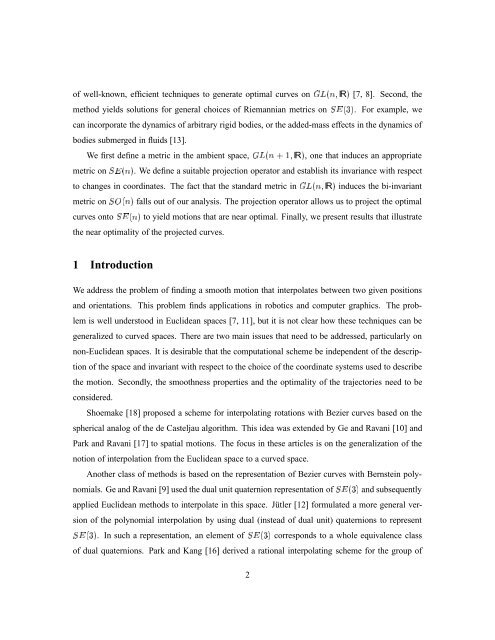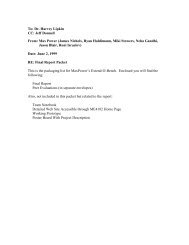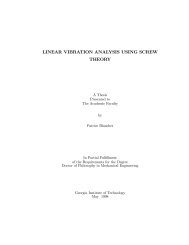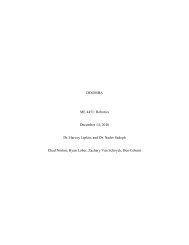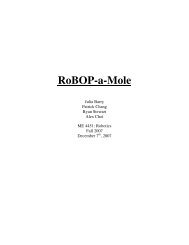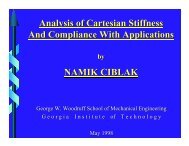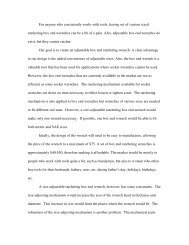New metrics for rigid body motion interpolation - helix
New metrics for rigid body motion interpolation - helix
New metrics for rigid body motion interpolation - helix
Create successful ePaper yourself
Turn your PDF publications into a flip-book with our unique Google optimized e-Paper software.
of well-known, efficient techniques to generate optimal curves on GL(n; IR) [7, 8]. Second, the<br />
method yields solutions <strong>for</strong> general choices of Riemannian <strong>metrics</strong> on SE(3). For example, we<br />
can incorporate the dynamics of arbitrary <strong>rigid</strong> bodies, or the added-mass effects in the dynamics of<br />
bodies submerged in fluids [13].<br />
We first define a metric in the ambient space, GL(n +1; IR), one that induces an appropriate<br />
metric on SE(n). We define a suitable projection operator and establish its invariance with respect<br />
to changes in coordinates. The fact that the standard metric in GL(n; IR) induces the bi-invariant<br />
metric on SO(n) falls out of our analysis. The projection operator allows us to project the optimal<br />
curves onto SE(n) to yield <strong>motion</strong>s that are near optimal. Finally, we present results that illustrate<br />
the near optimality of the projected curves.<br />
1 Introduction<br />
We address the problem of finding a smooth <strong>motion</strong> that interpolates between two given positions<br />
and orientations. This problem finds applications in robotics and computer graphics. The problem<br />
is well understood in Euclidean spaces [7, 11], but it is not clear how these techniques can be<br />
generalized to curved spaces. There are two main issues that need to be addressed, particularly on<br />
non-Euclidean spaces. It is desirable that the computational scheme be independent of the description<br />
of the space and invariant with respect to the choice of the coordinate systems used to describe<br />
the <strong>motion</strong>. Secondly, the smoothness properties and the optimality of the trajectories need to be<br />
considered.<br />
Shoemake [18] proposed a scheme <strong>for</strong> interpolating rotations with Bezier curves based on the<br />
spherical analog of the de Casteljau algorithm. This idea was extended by Ge and Ravani [10] and<br />
Park and Ravani [17] to spatial <strong>motion</strong>s. The focus in these articles is on the generalization of the<br />
notion of <strong>interpolation</strong> from the Euclidean space to a curved space.<br />
Another class of methods is based on the representation of Bezier curves with Bernstein polynomials.<br />
Ge and Ravani [9] used the dual unit quaternion representation of SE(3) and subsequently<br />
applied Euclidean methods to interpolate in this space. Jütler [12] <strong>for</strong>mulated a more general version<br />
of the polynomial <strong>interpolation</strong> by using dual (instead of dual unit) quaternions to represent<br />
SE(3). In such a representation, an element of SE(3) corresponds to a whole equivalence class<br />
of dual quaternions. Park and Kang [16] derived a rational interpolating scheme <strong>for</strong> the group of<br />
2


